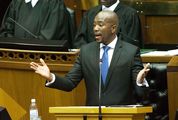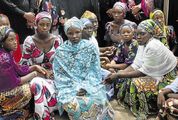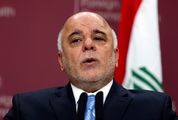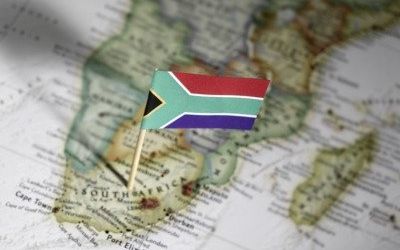LAST year seemed to be a year of bumbling through — South Africa managed to attract some net bond inflows, although what flowed into the equity markets in the first nine months from foreigners flowed out in the last three.
South Africa got its sell-off out of the way very early in May, which meant the markets had broadly priced most idiosyncratic and global contagion risk by the time the US Federal Reserve tapering volatility arrived. A boring, orthodox Reserve Bank helped while the market broadly fully priced in current-account deterioration, fiscal and other policy issues, and wider sovereign risks such as labour events.
This year may well be different — expectations of the extent of South Africa’s recovery should be important, markets are still focused on underlying structural issues and the continuing Fed tapering is creating more appetite for the trading of domestic idiosyncratic stories in emerging markets. What then are the top questions for investors at present?
• Will structural political changes outweigh the election?
We think the broad arch of political events since Mangaung (or Marikana) means the African National Congress (ANC) is already well aware of its sharp loss of electoral support and has started to react in terms of policy — not in a shift to the left per se but in a reintensification of state involvement in the economy. However, this has combined with a looser relationship with the Congress of South African Trade Unions (Cosatu) as the ANC realises Cosatu is holding back opportunities to create jobs, and hence we think President Jacob Zuma’s recent comments on the fact that Cosatu cannot co-rule the country were probably some of his most investor-friendly remarks ever.
However, the tension this creates, along with the fracturing of Cosatu, should provide ample volatility for investors this year.
We see these structural political issues as key, not so much the election itself (and our 56.2% vote forecast for the ANC, which was not far from the recent Ipsos poll), which is important for the investment environment.
• Was last year unusually quiet on the labour-market front?
My expectations for the labour market were clearly too negative going into last year, after Marikana and the Association of Mineworkers and Construction Union’s (Amcu’s) efforts to co-ordinate and be a "grown-up" union damped risk. However, this year may well see a co-ordinated cross-industry strike soon; a number of multiyear wage agreements are coming up for renegotiation and the National Union of Metalworkers of South Africa’s push into a wider range of industries is likely to cause tension. The fact that inflation this year is set to be markedly higher as inflation pass-through gathers pace will likely increase the possibility of tension. However, broadly, the market has become immune to the labour issue.
• Is this the last year of electricity strain?
With Medupi unlikely to make any real contribution until the middle of next year but Ingula coming online sometime this year, we expect another 18 months of stress. We think the market misinterpreted what happened at the end of last year as a one-off rather than a reflection of the underlying structural issues in the electricity system that continue to weigh heavily on foreign investors’ sentiment regarding South Africa. Load-shedding is impossible to forecast, but we think the risks remain very high in the first half of this year and it could cause some upset in the markets.
• Does the Reserve Bank have a communication problem?
Over the past 18 months, the Bank has clearly laid out South Africa’s vulnerabilities, its inability to deal with structural growth problems and its mounting underlying inflation concerns. However, many market participants still thought rate cuts were possible even up to the monetary policy committee meeting in September last year.
There appears to be a disconnect, a gulf of disbelief, between this large majority in the market (both domestic and foreign) and the committee, which we think looks at the issue in the wrong way and gets overly coloured by political inference.
Of course, the committee does not want to hike if it can avoid it, but that is not the question. With the inflation-growth balance tipping firmly towards inflation as evidence of pass-through mounts this year, we see the real question being: can a naturally dovish committee stick to its mandate and hike rates? Surely the answer is yes, and that is why we expect a slow rate-hike cycle starting in the middle of this year, which would be the ultimate stamp of credibility and boring orthodoxy for governor Gill Marcus. The problem would come, however, if the committee continues to raise expectations by preaching an increasingly hawkish message, but fails to increase or increases "late", while other central banks in emerging markets hike in the face of Fed tapering through the year. That would cause more serious issues in the rand as markets came to expect a politicised committee in the face of inflation.
• As the economy recovers (slowly), where do you see fair value for the currency, long-run potential growth, long-run current account levels, etc?
This debate already seems to be starting locally. Growth below 3% this year, at probably only 2.5%, and with growth prospects of only about 3.5% next year (which is only where we see medium-run growth potential too), should persuade markets and the electorate that South Africa needs to accelerate its reforms (not to mention changing direction) to increase medium-run potential growth and meet developmental objectives. Present good work on infrastructure is only really running to stand still. While we are sceptical this can happen this year, the political unrest with Cosatu may mean policy can change further down the line.
Equally, throughout this year, we think the market should realise the current account deficit can come back to an equilibrium of a wide 5%-5.5% of gross domestic product only and that a weak rand does little for competitiveness. We put fair value for the rand at about $9.75-$10 and expect it to trade in a broad $9.50-$10.50 range over the next two years, with upside risks.
• With this in mind, where does South Africa stand in the list of vulnerable countries?
On the various metrics we look at, South Africa is one of the more vulnerable economies, with low potential growth, higher core inflation and a wide equilibrium current account.
However, we think lumping countries together in convenient groupings is pointless. South Africa is far less vulnerable than Turkey, for instance, with orthodox monetary and foreign-exchange policy versus Turkey’s postmodernism; no real foreign-exchange liabilities to speak of at a macro level versus extremes in Turkey; and better liquidity on market stress versus Turkey’s likely market breakdown. South Africa squares up better than Brazil too, has a clearer policy and political dynamic than Indonesia, and could be seen as on a par with India since various necessary reforms have been instituted there since last year.
More important, there are far fewer "known unknowns" in South Africa than in these other countries (Turkey, especially, with its political issues at present ) — the market has been very efficient at pricing in South Africa’s issues. That does not mean it will be a simple year, just that with the right policy (quiet fiscal, tighter monetary policy) and obviously barring the risk of a Fed tapering upset, we think South African assets and the economy can have a benign year.
• Montalto is executive director and emerging-markets economist at Nomura International in London.
























Change: -0.47%
Change: -0.57%
Change: -1.76%
Change: -0.34%
Change: 0.02%
Data supplied by Profile Data
Change: -1.49%
Change: 0.09%
Change: -0.47%
Change: 0.00%
Change: -0.02%
Data supplied by Profile Data
Change: 0.48%
Change: 0.90%
Change: 0.36%
Change: -0.15%
Change: 1.05%
Data supplied by Profile Data
Change: 0.23%
Change: -0.32%
Change: 0.26%
Change: -1.05%
Change: -1.41%
Data supplied by Profile Data